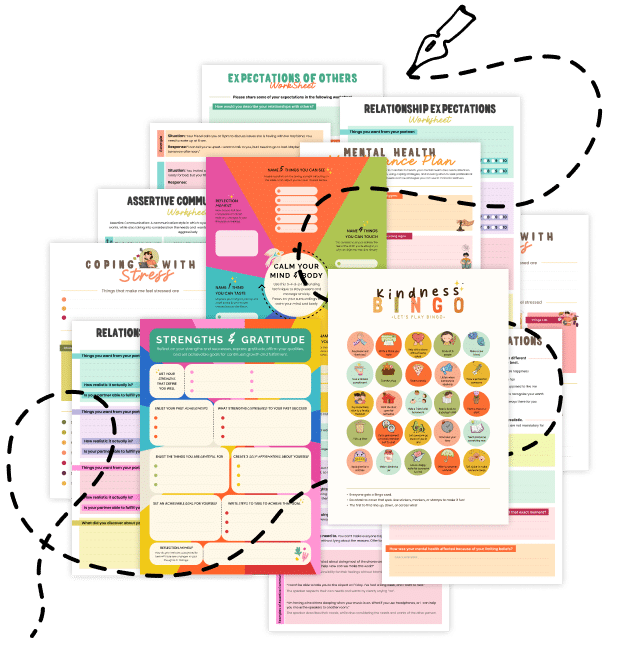20 Things About Compartmentalized Thinking
Compartmentalized Thinking is the cognitive strategy of dividing complex thoughts, emotions, or experiences into distinct “compartments” to manage conflicting ideas or stress. While it can help maintain focus and emotional stability, it may also lead to fragmented self-perception if overused.
1. What Is Compartmentalized Thinking?
It’s a mental process where you separate different aspects of your thoughts or feelings into distinct “boxes,” keeping conflicting or overwhelming information apart.
2. A Natural Coping Mechanism
In stressful situations, compartmentalization can help you manage emotions by isolating painful or conflicting thoughts from your conscious awareness.
3. Balancing Functionality and Fragmentation
When used moderately, it allows you to function effectively without becoming overwhelmed. However, excessive compartmentalization may lead to a fragmented sense of self.
4. Enhancing Focus
By isolating distractions or emotional conflicts, you can concentrate better on tasks at hand, making compartmentalized thinking useful in high-pressure work environments.
5. Reducing Cognitive Overload
Segmenting different types of information helps prevent mental overload, allowing you to process and respond to each “compartment” more effectively.
6. Benefits in Emotional Regulation
This strategy can help you manage intense emotions by “setting aside” distressing thoughts temporarily, so you remain stable in challenging moments.
7. Risk of Suppressed Issues
Over-reliance on compartmentalization might lead you to suppress or ignore important feelings that need to be addressed, potentially causing long-term stress.
8. Common in High-Stress Professions
People in fields like medicine, law enforcement, or emergency response often use compartmentalization to maintain performance under pressure.
9. Facilitating Decision-Making
When you can separate personal feelings from professional tasks, your decision-making can become more objective and rational.
10. Impact on Relationships
While compartmentalization might protect you in the short term, it can also hinder emotional intimacy if you consistently separate your true feelings from interpersonal interactions.
11. Adaptive vs. Maladaptive Use
Used adaptively, compartmentalization is a helpful tool for managing daily stress. When it becomes habitual and rigid, it may lead to difficulties integrating your experiences.
12. Influencing Self-Perception
Persistent compartmentalized thinking can create a sense of “split self,” where different parts of your identity feel disconnected from one another.
13. Cultural and Social Influences
Some cultures or social environments may encourage compartmentalization as a means of maintaining social harmony, while others value emotional integration.
14. Psychological Defense Mechanism
It’s considered a defense mechanism that helps you avoid cognitive dissonance—the discomfort of holding conflicting beliefs or emotions at once.
15. Enhancing Productivity
For tasks requiring high concentration, compartmentalizing distractions can be a powerful productivity tool—keeping you on track despite competing thoughts.
16. Potential for Personal Growth
Recognizing when you compartmentalize can be the first step toward integrating disparate parts of your identity, leading to a more holistic sense of self.
17. Role in Therapy
Therapists may work with clients to understand and, when necessary, reduce excessive compartmentalization, encouraging healthier emotional integration.
18. Strategies to Improve Balance
Mindfulness and self-reflection can help you notice when you’re compartmentalizing too rigidly, allowing for more balanced processing of experiences.
19. Training Cognitive Flexibility
Practicing techniques that promote cognitive flexibility can help you shift smoothly between compartments and integrate them when needed.
20. Related Topics to Explore
- Cognitive Flexibility: Develop your ability to adapt your thinking across different contexts.
- Psychological Flexibility: Learn to adjust emotionally and cognitively in a balanced way.
- Self-Integration: Explore methods to harmonize various aspects of your identity.
- Emotional Regulation Strategies: Enhance your ability to manage and integrate feelings constructively.
Quick Tips to Optimize Compartmentalized Thinking
- Monitor Your Patterns: Reflect on when you tend to compartmentalize and whether it’s serving you well.
- Practice Mindfulness: Engage in mindfulness exercises to become more aware of your thoughts and emotions, fostering integration.
- Set Aside Time for Reflection: Regularly review your experiences to gradually integrate insights from different “compartments.”
- Seek Feedback: Discuss your thought processes with trusted friends or therapists to gain perspective.
- Balance Task Focus and Emotional Awareness: While compartmentalizing can boost focus, also make room to process your emotions holistically.
By understanding and refining your use of compartmentalized thinking, you can harness its benefits for focus and stress management while avoiding the pitfalls of a fragmented self. Share these insights with friends, colleagues, or anyone interested in cultivating a balanced and resilient mindset!
Need a Professional Workbook Design Service?
From worksheets to activities, discover thoughtfully designed tools to support your mental health journey.


